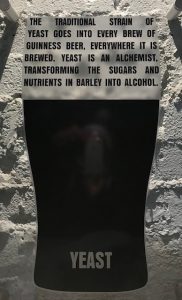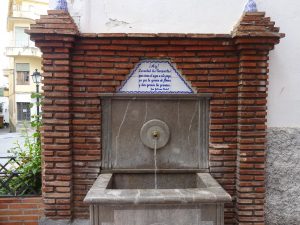When you think of Ireland you think of Guinness…

Day 1, Dublin- I head to the Guinness Storehouse to indulge in seven floors of all things Guinness. Guinness stout has been produced here at the St. James Gate Brewery since 1750.

The ground floor introduces the beer’s four natural ingredients (barley, water, hops, and yeast). 100,000 tonnes of Irish grown barley are used every year in making Guinness. It is brewed using a combination of malted, unmalted and roasted barley. Barley is roasted to perfection at exactly 232 degrees, which gives it the unique darkness and amazing roasted coffee and chocolate aroma.

High quality hops is purchased from Australia, Czech Republic, Germany, New Zealand, the United Kingdom and the United Sates. The yeast for Guinness is only grown at the St. James Gate and is so valuable that a supply is always kept locked in the Director’s safe.

The water is used to slow the roasting process when the roaster is satisfied with the color of the roasted grain. High quality, soft water from the Wicklow mountains above the city of Dublin. The addition of water is called “gogging”.
Coopering, an ancient craft of making wooden casks (barrels), is also part of the Guinness process. At one time Guinness employed over 300 coopers with pyramids of casks filled with Guinness ready to be shipped around the world.

At the Guinness Academy you can learn the Art of the Pour, enjoy the tasting room and sample all flavors of Guinness, view a century of noteworthy Guinness advertising, and savor a pint of your favorite Guinness brew in the high energy Gravity Bar with a 360 panoramic view of Dublin.


The best way to begin an Irish adventure – with a pint of Guiness!



































































